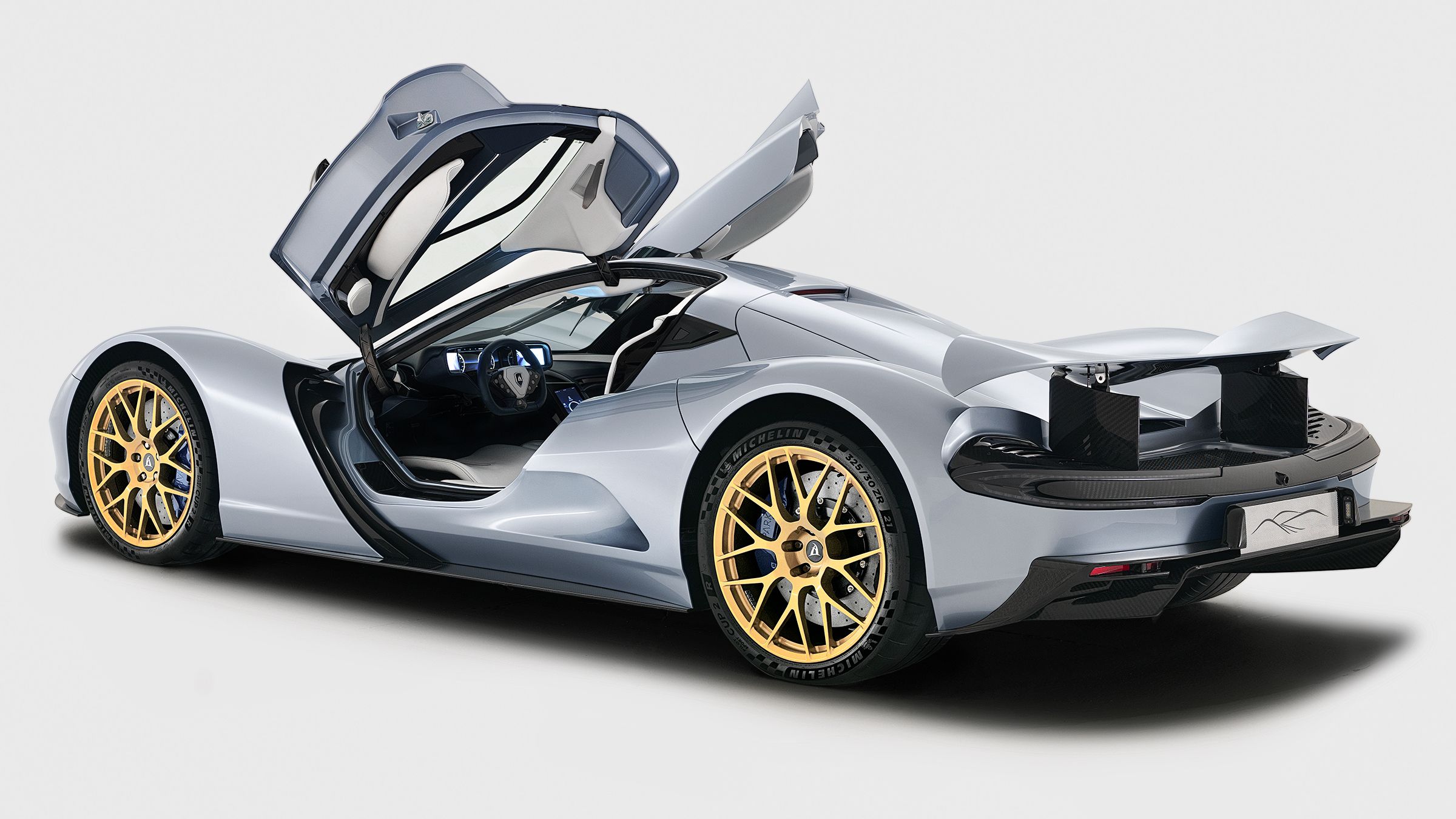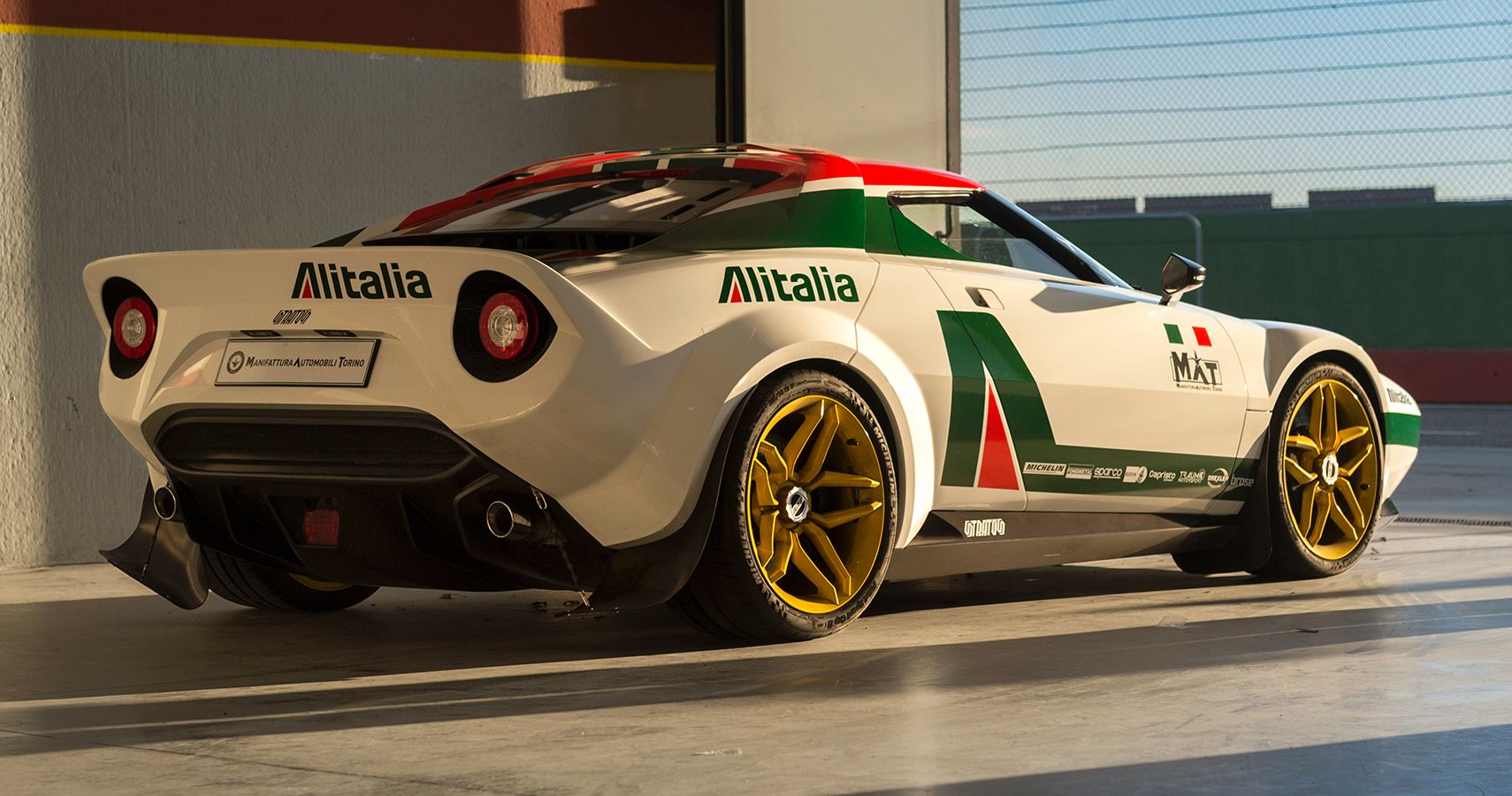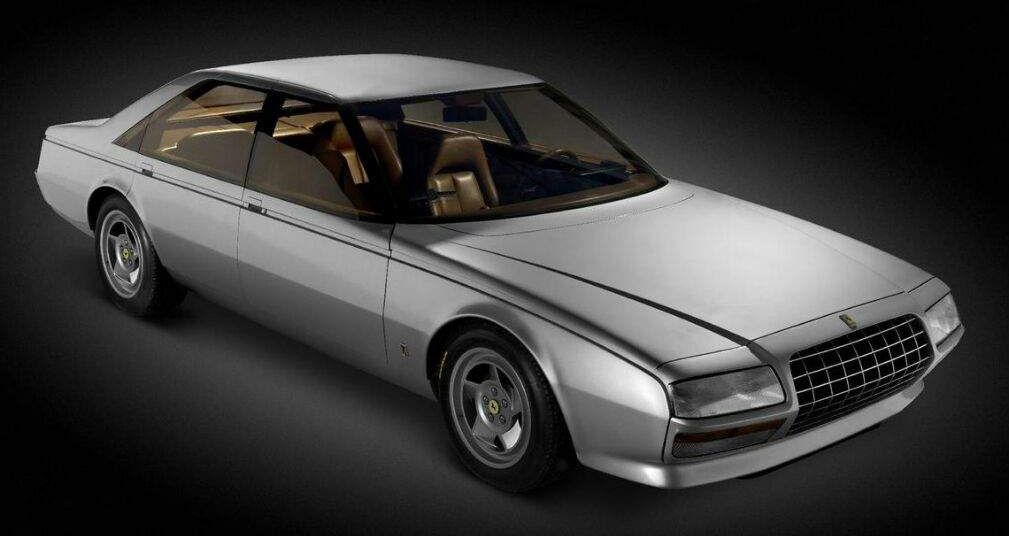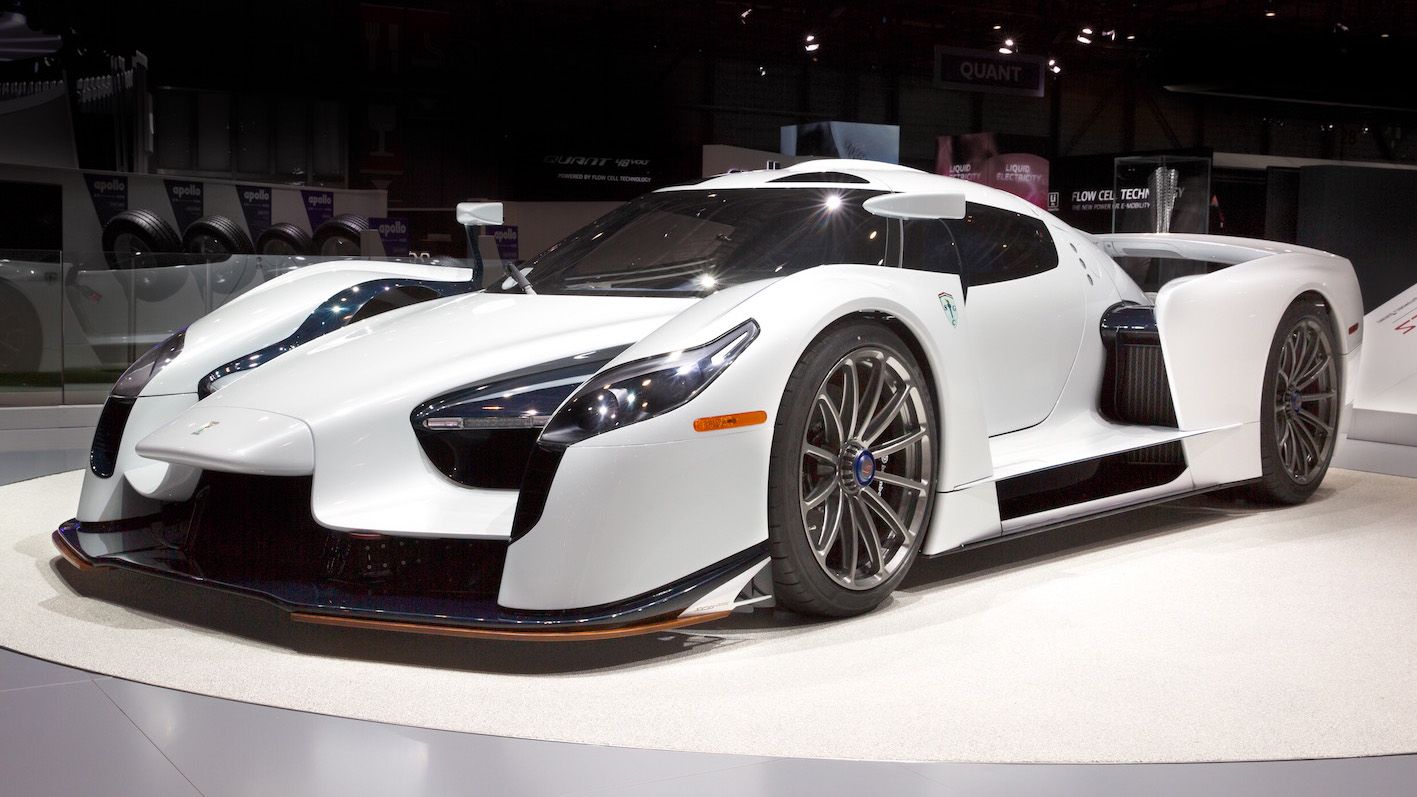At the head of the river Po’s vast floodplain, where the Italian Alps tumble down from their icy peaks to the verdant forests and vineyards of Piedmont, lies the region's ancient capital city. Cradle of the Italian automotive industry, Turin is home to the historic Lingotto Fiat factory, famed for its magnificent Art Deco design and improbable rooftop test track. If you were to stand atop one of the track’s banked corners, you could point to the workshops of Ghia, Bertone, Frau, and Pininfarina, some of the most celebrated coachbuilders in history.
Since 2014, Turin has also been home to Manifattura Automobili Torino. This boutique automotive engineering firm, widely known as M.A.T., is responsible for designing and developing an incredibly diverse array of one-off performance cars, including the Nürburgring slaying SCG003C, the carbon fiber Apollo IE hypercar, and a perfect replica of the gorgeous Alfa Romeo, Tipo 33. With the development of its 1,980 horsepower, all-electric, Aspark Owl, and its breathtaking revival of Lancia’s legendary Stratos, M.A.T. has evolved from a one-off specialist to a short-production manufacturer.
The firm plans on producing fifty examples of its Aspark Owl, while the new Stratos will have a production run of twenty-five cars. M.A.T. is punching well above its weight, and TopSpeed tracked down its 63-year-old founder, Paolo Garella, to learn more about the unassuming engineer’s career, the extraordinary cars he builds, and the true story behind the new Stratos, which, in true Italian style, is a tale of passion and intrigue.
The Road To Pininfarina
For over a century, the Turin Motorshow exhibited the best of Italian auto design, and a concept car unveiled by Ferrari in 1980 would inspire a young student of mechanical engineering to join the automotive industry.
“The one that got to me the most was the Ferrari Pinin,” Paolo Garella smiles as he recalls the moment. “This, for me, was the apex of a dream car.”
If (as I was) you are unfamiliar with the Pinin, you might be equally surprised to discover that a four-door sedan inspired a career culminating in some of the fastest, sleekest sports cars in recent memory.
Garella's obsession with speed and performance originated from two opposing influences.
“My father was a great person, but extremely slow in driving,” Garella explained. While his uncle, the General Manager of Ducati and an influential figure in the family, drove a powerful Lancia. “We were the only ones driving a Fiat, and we were always last,” he recalled of boyhood family outings. “It gave me the push to go fast.”
After cutting his teeth in Goodyear’s testing department and a three-year tenure with specialist race car preparer, PTI Alba Tech, Garella would secure a role at Pininfarina, the source of some of the most breathtaking car designs ever to see the light of day. The renowned design shop would be his employer for nearly 18 years until a twist of fate changed everything.
At The Apex Of Automotive Engineering
“It was a crazy time,” Garella said of his early career at Pininfarina, “because money was not a problem. The answer was always, ‘Just do it.’” Working in the special projects department, he was part of a team building bespoke cars for royalty and wealthy clients, including the exceedingly rare Ferrari 456GT Venice. But when Andrea Pininfarina succeeded his father as CEO, he orchestrated a restructuring of the firm.
“I was made head of the task force that created the engineering business unit,” Garella said, “and when this job was finished, I proposed to Andrea that we go back to the root of the company and restart the special projects division.”
Invigorated by his new remit, Garella set off on a worldwide tour, connecting with established car collectors and potential buyers, and meeting with homologation authorities to better understand the regulatory landscape.
“That was an incredible journey,” Garella holds out his hands, a broad smile on his face, “I visited hundreds of collectors who might be interested in a one-off, and met some exceptional people.”
Along the way, he would form strong relationships with Peter Kalikow, Michael Stoschek, and Jim Glickenhaus, of Scuderia Cameron Glickenhaus (SCG).
The Genisis Of Manifattura Automobili Torino
Garella had worked with SCG on the Pininfarina-designed P4/5 Competizione race car, where he would eventually mate a KERS hybrid system with the P4/5’s Ferrari V-8. In 2012, the car finished the 24 Hours of Nürburgring in 12th position overall. “Still the best result for a hybrid car at the Nürburgring,” Garella said, taping the table. When Glickenhaus returned the following year with a proposal to build a new GT car, the 003 Competizione, from scratch, Garella jumped at the opportunity.
After a fruitless search to find a local company prepared to take on the new project, Garella decided to start his own. “M.A.T. was created to build the SCG003C,” he told me, and went on to confide that when he told his mother-in-law of his plan to leave Pininfarina, she derided him as “crazy.” The Italian for crazy, matto, when spoken in the northern Italian dialect of her native Trentino, becomes mat, giving rise to the new company’s adopted name. “I just found the words to make the [acronym],” Garella added, chuckling to himself.
Taking Pole At The Green Hell



M.A.T. completed the development of the new car in time for the 2015 24 Hours of Nürburgring, where, a mere two years later, it would etch its name in history.
“[The SCG003C] represents the car into which I have put most of myself, and my way of working, a mix between modern and traditional,” Garella said. “Every single choice in the design and engineering is designed to make it a winning car, and it was both a big engineering effort and a big political effort,” Garella added. In 2017, “We were the first privateers to enter the factory class, and the car took pole position.”
This remarkable achievement captured the attention of motorsports publications globally, and Garella diffidently showed me a photo on his phone featuring the SCG003C leading the race's grid lineup, ahead of the factory cars of Mercedes, Bentley, Ferrari, and Porsche. M.A.T. built a road-going scuderia version, the SCG003S, unveiled at the 2017 Geneva Motorshow, which saw the competizione’s 3.5-liter V-6 Honda engine replaced with a road-tuned, twin-turbocharged, 4.4-liter V-8, producing a claimed 800 horsepower.
The Aspark Owl: Quickest Of The Quick



Now an established player, Garella demonstrated the diverse capability of his highly skilled team when M.A.T. partnered with Aspark, a Japanese electronics engineering specialist, to develop the Owl, a fully electric hypercar that can out-accelerate the fastest EV ever, the Rimac Nivera. Boasting four electric motors producing a combined 1480 kW and an in-house-developed launch control system, capable of catapulting the Owl to 60 MPH in a claimed 1.72 seconds.
The Stratos Saga
It was nearly 11 PM by the time we finally began talking about the development of the new Stratos. A purpose-built rally car, the original Lancia Stratos’ innovative mid-engined, short-wheelbase design was lightweight, agile, and fast, winning three consecutive World Rally Championships from 1974 to 1976. When I mentioned that the endeavor to revive the rally legend seemed to have surmounted an extraordinary number of obstacles, Garella paused for a moment before saying, with a wry smile, “I never told anybody the true story.”
The saga begins three years before Garella left Pininfarina to start M.A.T. A group of designers and investors had hatched a plan to resurrect Lancia’s wildly popular mini-monster and bought the rights to the Stratos name and logo. The group included Chris Hrabalek, owner of Fenomenon design consultancy, and billionaire entrepreneur Michael Stoschek, with whom Garella had met after restarting Pininfarina’s Special Projects team.
Hrablek had developed a mock-up Stratos concept for the 2005 Geneva Motorshow, but it wasn't until 2008 that Stoschek bought the stalled project to the attention of Pininfarina.
“I convinced Michael [Stoschek] to do the project,” Garella recalled, before correcting himself, “I should say, he decided Pininfarina and I were good enough to build the car for him.” Having won Stoschek’s confidence, Garella had to overcome internal reservations at Pininfarina about working on one of Bertone’s most celebrated designs. “The design department didn’t want to touch it"
An Uncompromising Billionaire, A Fickle CEO, And A Tenacious Engineer
The agreed resolution to the impasse would see Hrabalek design the car, which Pininfarina would build under a subsidiary badge. Triumphant, Garella flew to Germany to meet Stoschek with the contract that would start the project.
“I was waiting at the hotel, and as Michael opened the door, my phone rang,” Garella shook his head as he recalled the moment. “It was Andrea on the phone. He said, ‘You can’t sign the contract and you can’t tell the client why.’”
A recently published article, credited to Chris Hrableck, had deeply upset Andrea Pininfarina to the extent that the mercurial CEO decided to sever ties with him and called off the Stratos project. Garella was standing face to face with Stoschek and in an impossible situation.
“Finally, I decided to tell Michael the truth,” he said. Stoschek’s Germanic practicality proved impervious to the volatile passions of his Italian counterpart. “Michael said, ‘You and I will review the contract, and I’m going to sign it. When you go back to Pininfarina, I want them to know you’ve done a good job.”
Tragedy And Triumph
A crestfallen Garella returned to Turin with his contract and little hope of getting it countersigned. Just a few days later, on August 7, 2008, a tragic road accident took the life of Andrea Pininfarina, throwing the family-run business into turmoil. “Michael called me back the following September,” Garella said, “and I finally convinced everyone to do it.” With numerous projects at Pininfarina postponed or terminated due to the family crisis, the revived Stratos attracted keen attention. “Just six months before, no one was interested,” Garella said, “now, everybody wanted a piece of it.”
“The new Stratos was probably the most refined and best engineered of all the one-off projects we did because of Michael,” Garella said, “because of his attitude. He always pushed us to deliver the maximum in every aspect of the build.”
Based on a 430 Scuderia, its chassis cut down by 250mm, the new Stratos would incur the ire of Ferrari, who lobbied its long-time partner to halt the project. Although the new Stratos has endured more than its fair share of setbacks, the end result is worthy of the enormous effort that bought it to bear.
The Tough Business Of Building Masterpieces
The new Stratos promised similar levels of agility and maneuverability once attributed to the original Lancia car. The re-tuned Ferrari V8 produces 540 horsepower and is capable of accelerating the diminutive coupé from 0 to 60 MPH in just over three seconds. A manual gearbox and flat-plane crankshaft pay homage to its forbear, and its classic wedge-shaped bodywork is now hewn from carbon fiber.
“What this project taught me is that our perception of how things are, how they look, are the result of a meta-design created in our minds. People look at it and think our new Stratos is an exact copy of the old one, but it’s completely different.”
With the working prototype completed, Garella left Pininfarina to start M.A.T., while Stoschek set about finding a firm to build and sell a limited production run of the new Stratos. His journey would eventually lead him back to Garella.
“No one was interested in the marketing and selling aspect,” Garella explained. “Finally, I said, ‘Give me the license. I will build, promote, and sell it.’ And, with that, we started out on this new adventure.”
M.A.T. has already sold nine of the 25 Stratos cars destined for production, and if you have at least $800,000 to spare, you can order your own, customized example.
Big Dreams, Real Cars



When I asked Garella about achieving success in such a niche industry, he said, “At Pininfarina, I was told a thousand times that, because my clients are private people, they’re not reliable.” A notion he dismisses. For Garella, the first step to success requires partnering with the right people.
“For us, what counts is the relationship,” he said. “We build and sell something that is as much a jewel and a toy as it is a car. But it's interesting and challenging, it gives you great emotion, and it's a journey. And you don’t go on a journey with just anyone. You choose the people you journey with.”
Garella credits M.A.T.’s success to the firm's ability to holistically design, build, and deliver (and now sell) an end product. “I’ve worked with the OEMs, in restoration, racing, and design. All these activities are like islands that don’t communicate,” he told me. “M.A.T. was created not as an artisanal business but as a small manufacturer. Design, styling, mechanical engineering, electrical engineering, software development, even our own battery, validation, and homologation, 50 people responsible for all the various functions. This ability gives us incredible strength.”
Privateer teams, once commonplace, have all but disappeared from motorsport's topflight, and the ever-modest Garella struggles to downplay the importance of the Glickenhaus P4/5.
“We were the first in 30 years, creating great value for the client, for the car, and for the industry,” he said. “We have big dreams. Now, we are working toward something similar, not in racing, but more in design and art. The next [project] we are working on is electric," Garella says of his upcoming plans. "Something I hope will position our company for the future, and we are looking for suitable investors to help us reach our new goals.”
In a world of CGI-rendered fantasy cars, Paolo Garella and his specialist team have built an enviable reputation for transforming dreams into tangible masterpieces. Or, as Garella would say, with his characteristic gift for understatement, “We do cars.”











